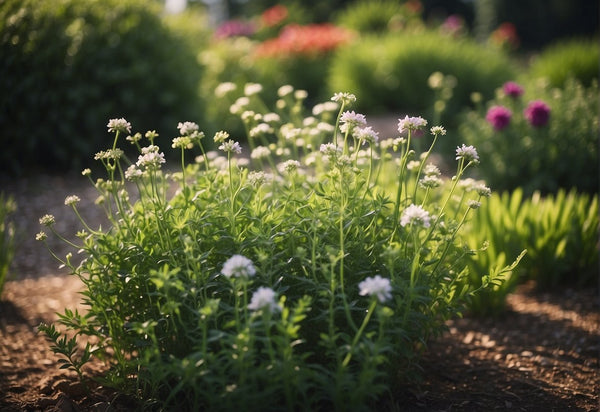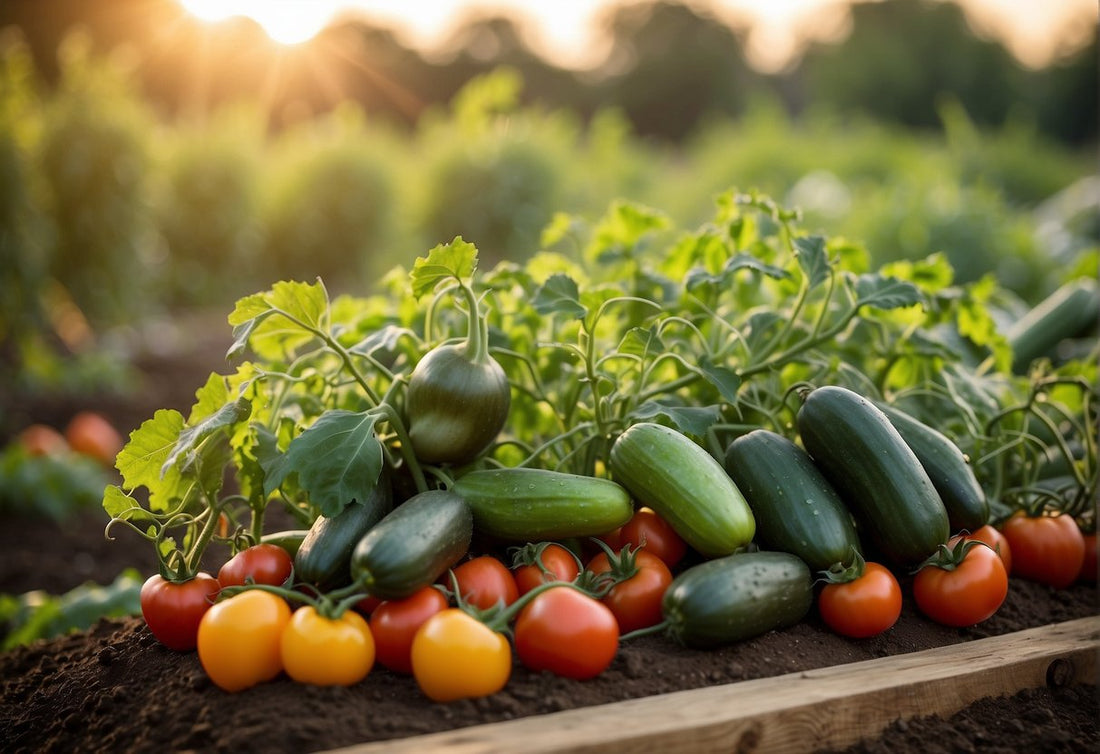Texas offers a unique combination of climate conditions that can challenge even the most seasoned gardeners. However, with its diverse weather patterns, home gardeners in the state can cultivate a vibrant array of plants that thrive in its environment.
From the heat-lovers that bask in the relentless summer sun to those that can withstand a surprise cold spell, Texas gardens can be as varied as the state itself.
Your home garden in Texas can become a haven for plants that not only survive but flourish throughout the year. Selecting the right plants is key to a bountiful garden.
Look for species that are well-suited to the soil types, sun exposure, and temperature ranges of your local area. With careful planning, your garden will not only enhance your home but also provide a joyful and rewarding hobby.
Choosing The Right Plants

Selecting the right plants for your Texas home garden is crucial. You'll want to focus on plants that can thrive in the Texas heat and have adaptable soil preferences.
Consider the Texas Climate
Texas' climate varies from arid in the west to humid in the east. You should choose plants that can handle intense heat and periods of drought. Succulents and drought-resistant plants like yarrow are ideal for western Texas.
In contrast, for the humid east, opt for plants that can tolerate both the heat and the moisture, such as native grasses or perennials.
Soil Preferences for Texan Gardens
Your garden's soil type can vary significantly throughout Texas. Most areas have alkaline soils that may need amendments. Raised beds or containers can provide plants with the ideal soil necessary for growth.
Always test your soil and consider adding organic matter to improve its quality. Plants like bluebonnets and turk's cap are excellent choices for typical Texan soils.
Vegetable Gardening
Starting a vegetable garden in Texas brings its unique set of challenges and rewards. You'll want to choose plants that can handle the Texas heat and still provide a bountiful harvest.
Tomatoes
Tomatoes are a staple in Texas gardens, thriving in the warm climate. Start your tomato plants indoors about 6-8 weeks before the last frost date, then transplant outdoors once the weather warms. Choose varieties like 'Celebrity' or 'Beefmaster' for best results, ensuring they get full sun and regular watering.
Peppers
From sweet bell peppers to fiery habaneros, peppers adore the Texas sun. They need to start in early spring and can be grown in containers or raised beds. For peppers, the soil should be well-draining and rich in organic matter. Maintain even moisture, and watch your peppers flourish.
Okra
Okra loves the heat, making it perfect for Texas summers. Directly sow the seeds into the garden after the soil has warmed, and give them plenty of space to grow. It's best to harvest okra pods when they're about 2-3 inches long for optimal tenderness.
Herbs and Spices
When cultivating a home garden in Texas, you'll want plants that love the heat and can handle the sun. Herbs and spices are great options—they're not only easy to grow but also add fresh flavors to your dishes.
Basil
Basil thrives in Texas due to its love for warm temperatures. Whether you choose Sweet, Genovese, Thai, or Purple Basil, this herb will flourish in your garden with just a bit of care. Water regularly to keep the soil moist, and you'll have a steady supply of aromatic leaves to enhance your cooking.
Cilantro
Growing Cilantro seeds in Texas can be a bit tricky because of the heat. To keep it from bolting too quickly, plant it in a spot that receives morning sunlight but is shaded during the hottest part of the day. Frequent harvesting encourages bushier growth. Snip often, and you'll enjoy fresh cilantro for your tacos and salads.
Mint
For a refreshing touch in your beverage or dish, Mint is your go-to herb. It's incredibly hardy and can spread quickly, so consider planting it in containers to control growth. Regular watering and occasional trims will keep your mint happy and abundant. Just remember, mint likes a bit of shade in the Texas sun!
Fruit Trees and Bushes
In Texas, your home garden can really flourish with the right fruit trees and bushes. These varieties are well-suited for the Texas climate and soil, providing you with a bounty of fresh, tasty fruits right from your backyard.
Peach Trees
Peaches are a favorite among Texans for home gardening due to their sweet, juicy fruit and beautiful blossoms. For the best harvests, choose varieties like 'Harvester' or 'Loring', which are known to be heat-tolerant and can thrive in Texas' warm climate.
Blackberries
Blackberries are a robust and versatile addition to your Texas garden. Varieties like 'Kiowa' and 'Rosborough' are particularly hardy, and with minimal care, you'll have an abundance of large, delicious berries ready for your pies and jams.
Fig Trees
Fig Trees are an excellent choice for a Texan garden, as they can weather the heat. Opt for 'Celeste' or 'Texas Everbearing', which yield sweet fruits and do well even in the less-than-ideal soil conditions that are sometimes found in this state.
Water Conservation Techniques
When you're gardening in Texas, saving water is as important as choosing the right plants. Here are some water-wise methods to help your garden flourish:
- Drip Irrigation: Install a drip irrigation system to deliver water slowly and directly to the roots of your plants. This method cuts down on water waste
- Rainwater Harvesting: Set up barrels to catch rainwater. Using collected rainwater for your garden not only conserves tap water but is also better for your plants because it’s free of chlorine and other chemicals.
- Mulching: Cover soil with organic mulch to reduce evaporation. Mulch keeps the soil moist and cool.
- Right Time to Water: Water early in the morning or late in the evening when temperatures are cooler, reducing water loss from evaporation.
| Watering Tips | Description |
|---|---|
| Use a Watering Can | Be frugal with your watering and only give thirsty plants a drink. |
| Spot Watering | Target only the base of the plant, rather than sprinkling over the entire area. |
- Native Plants: Opt for local Texan plants which are adapted to the local climate and require less water. They’ll thrive with minimal fuss.
- Soil Health: Improve your soil by adding organic matter to increase its water retention capabilities.
By applying these techniques, you'll maintain a lush garden that’s kind to the environment and your water bill.
Frequently Asked Questions
Gardening in Texas can be rewarding with the right plant choices. Let's dive into the most common questions to ensure your garden flourishes.
What are some of the easiest plants to grow in Texas for beginner gardeners?
If you're starting your first garden in Texas, consider tough plants like lantana, salvia, and marigold. These are not only easy to care for but also beautifully adapt to the Texas climate.
Which perennial flowers thrive in the Texas heat?
Yarrow and Coreopsis are great perennial choices for Texas gardens. They'll brighten your space with vibrant blooms and endure through the high temperatures.
How can one maintain a lush garden year-round in Texas?
To keep your garden green all year, balance seasonal planting. Use cool-season grasses and perennials that peak at different times so you always have something flourishing.
What are some low-maintenance outdoor plants that can withstand Texas weather?
Succulents, such as agave and sedum, are ideal for Texas weather, needing minimal water or care. These hardy plants can survive in tough conditions with ease.
Which vegetables are most suited to the heat in Texas for a home garden?
Vegetables like okra, peppers, and sweet potatoes thrive in Texas heat. They can handle the strong sun and grow heartily in your summer garden.
Can you recommend some native Texas plants that are good for home landscaping?
Incorporate Texas natives like Bluebonnet and Texas Sage into your landscaping. They're well-adapted to the local environment and attract native wildlife.

